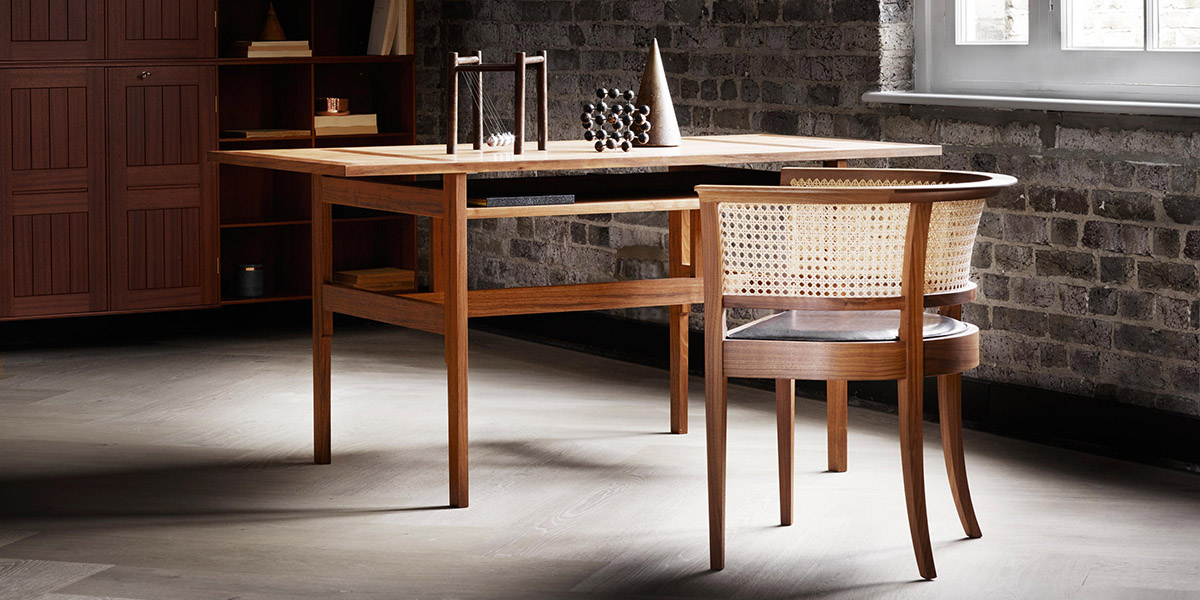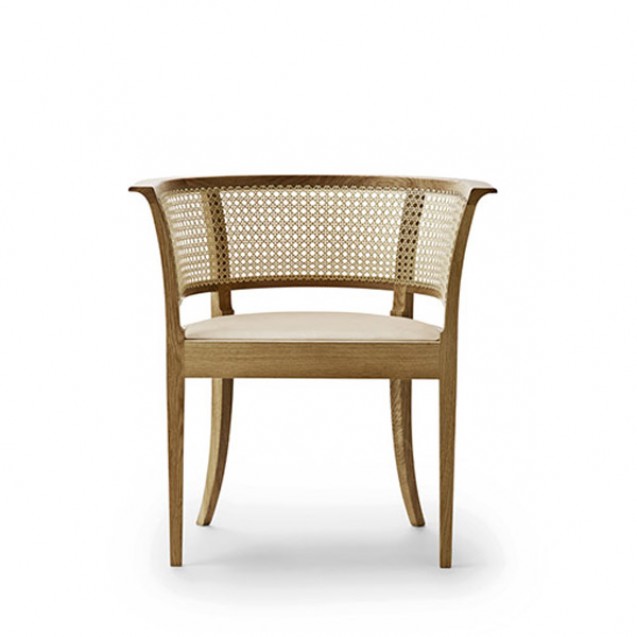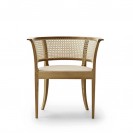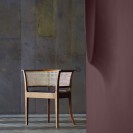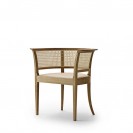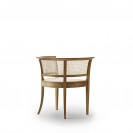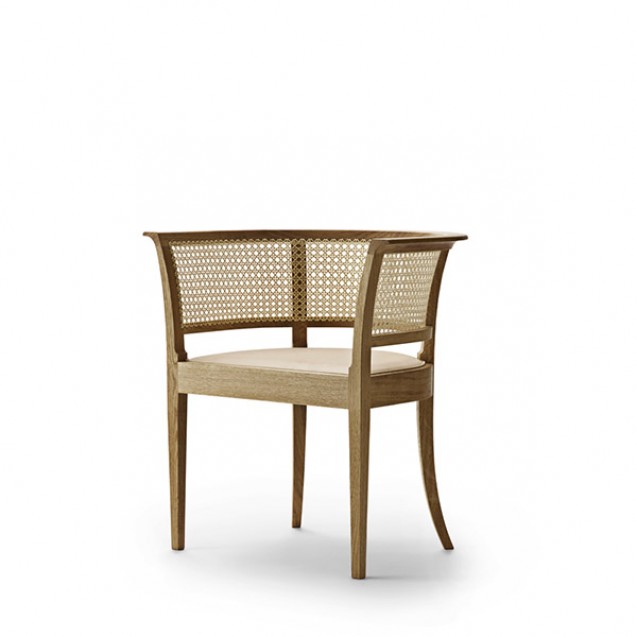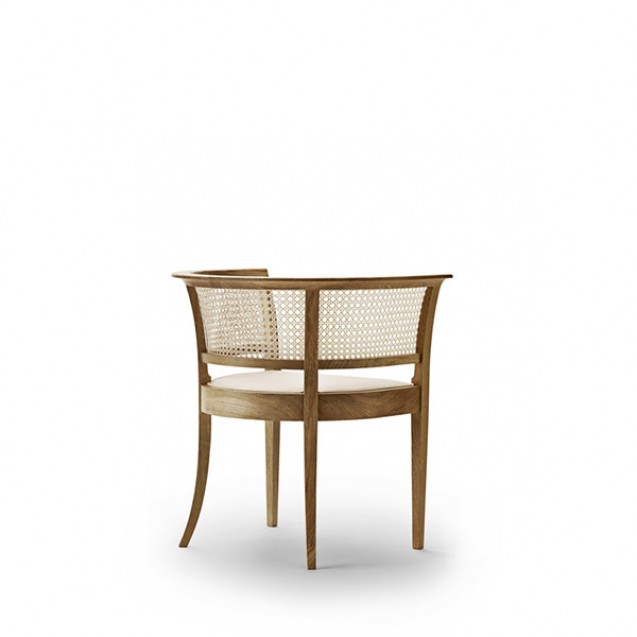KK96620 FAABORG CHAIR
Widely regarded as the first Danish modern design classic, the Faaborg Chair ushered in a new era for Danish design, creating a foundation for the Danish Modern phenomenon that emerged onto the global stage in the 1950s.
The young Klint meticulously considered every aspect of the Faaborg Chair to ensure it fulfilled its intended function, arriving at a light and portable solution that allowed museum visitors to position the chair before artworks they wished to study in greater detail.
The Faaborg Chair's unadorned design and the unity between its structure, materials and function set it apart from its predecessors while showcasing Klint's traditional design values and modern approach.
The chair is crafted from solid wood and features handwoven French canework on the rounded backrest.
| About Designer | |
|---|---|
Kaare Klint |
Kaare Klint (1888-1954),
the man behind classics such as the Safari Chair and
the Faaborg Chair, is considered the father of Danish furniture design. For
Kaare Klint, the son of architect Peder Vilhelm Jensen-Klint, exposure to
architecture was a natural part of his early development. However, it was
primarily as a furniture designer that Kaare Klint made his mark on Danish
architecture. Kaare Klint was
born in 1888 in Frederiksberg and designed his first furniture in 1914, for the
Faaborg Museum. From the beginning, Klint's furniture was characterized by
harmony between his choice of form and materials, often inspired by earlier
styles or other cultures. Klint
helped found the Royal Academy of Fine Arts Furniture School in 1923, and was
appointed professor there in 1924. In this role, he inspired and taught a
number of prominent Danish furniture designers, who went on to pave the way for
the golden age of Danish design, from 1945 to 1975. Kaare Klint also
founded the Furniture and Spatial Design Department at the Royal Academy of
Fine Arts, where he employed a teaching method considered radical in his day.
He asked students to construct furniture items from the inside out, based on
thorough pre-analysis. The outward style was less significant; instead, the
focus was on function analysis, choice of materials, and material processing.
Klint's
influence led to a comprehensive renewal of Danish furniture design. He
demanded clear and logical structures, with nothing superficial - only honest,
pure lines, the best materials, and genuine craftsmanship. |
